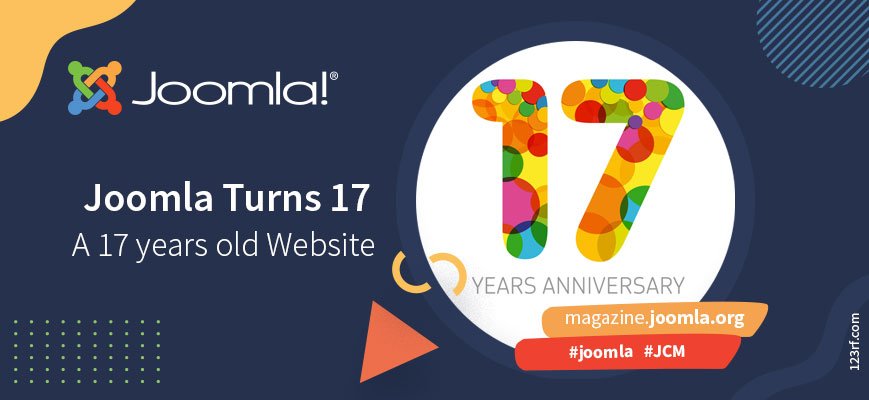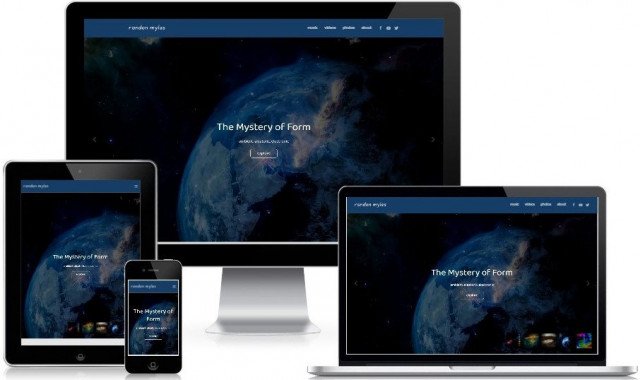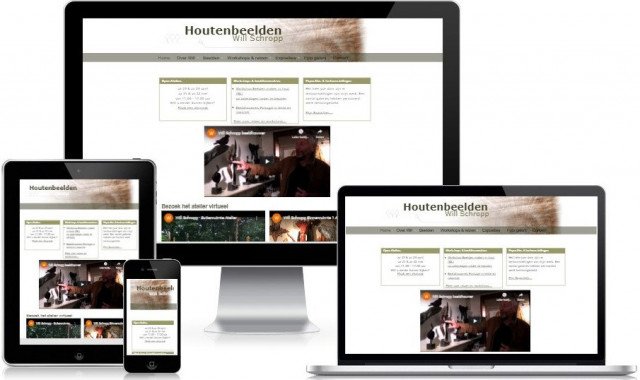My 17+ years old Joomla website
What is the average lifespan of a website? I have absolutely no idea. But I figured: with Joomla turning seventeen, surely there should be some Joomla websites out there that are just as old, or even older. So I put a call out, and I found three Joomlers that actually have or maintain an “ancient” website: Peter Martin, Randon Myles and Rachel Walraven. How did their site evolve? And what is the secret to keeping your site alive for so long?
Thanks for your co-operation in this article! Could you describe the website?
Peter Martin: https://db8.nl is my company website. I built the first version in 2004 using Mambo CMS. My purpose with the website was to promote my services with building Mambo CMS websites and osCommerce webshops. With the start of Joomla, I switched to Joomla.
Randon Myles: https://randonmyles.com is my personal website, designed to highlight my work as a composer and electronic musician. Since it is my own site, it’s the first site I built, the first site I used Mambo on, and the first site I used Joomla on. (Learn on your own site first!)
Rachel Walraven: https://houtenbeelden.nl is the website of a local (but internationally known) wood artist. It shows his work and the expositions where you can find it. The artist also organizes workshop trips that are promoted on the site. When we met it was 2004. He didn’t have a website. The purpose of the site was only to show his work and to get commissioned work.
Was it a Joomla website straight away, or did it evolve from Mambo/HTML/something else?
Peter: I started with Mambo CMS, and moved to Joomla 1.0 when it came out.
Randon: The original site was built in table-based HTML and predates CMSs and CSS. I started working on it in Graduate School in the early 90s before Internet Explorer first came out. Mosaic was the browser of choice (because they added images!). I can’t say how many iterations there have been with this site - a lot!
Rachel: We started in Mambo and moved to Joomla when it forked.
What was your experience with websites before you started with this one?
Peter: I built my first HTML website in 1996 during college to share information about my graduate project. And to share info + lists of recordings of my favorite artists. At that time I was doing tape trading: exchanging cassette tapes with live/demo recordings of alternative and electronic music with people all over the world. After college, I started working for a large pharmaceutical company where I helped set up the organization's intranet using FrontPage 98 (yuk!). In my spare time, I started using PHPDesigner to create HTML and PHP websites before switching to Mambo/Joomla CMS.
Randon: I taught myself HTML in Graduate School (there were no classes at that time) in order to make an FAQ page for the Western Michigan University School of Music computer lab. This was my first full website, but I’ve created hundreds since.
Rachel: I started building sites in 1998, just for fun at that time. The first site I built was about my hobby back then, but soon I liked creating websites more than practicing the original hobby (embroidery). LIking it so much I did a written course in web design (turned out I had already read the books used by the course). This site was the very first site I built for somebody else.
How did the site develop over the years?
Peter: I started with Joomla 1.0 using my own custom template. Joomla's core components rendered its output using HTML tables. To change that you had to do core hacks! When Joomla 1.5 came out, I used a migration tool to migrate from 1.0 to 1.5. Again, I created my own template. And changed the Joomla component output without core hacks, thanks to Joomla's template override system (yeah!). However, back then there were no template or CSS frameworks yet. Which resulted in many problems when new browsers came out. Furthermore, having a Dutch/English website was a bit of a hassle because you had to use 3rd party extensions.
With the release of Joomla 2.5, I could finally use Joomla's core multilingual functionality. In 2017, I redid the layout of my Joomla 3.x website with a custom responsive template using the Foundation framework. After that, for years I only added some new content.
Ever since Joomla 4 came out (in August 2021) I wanted to migrate but had to do it in steps. During the Christmas holiday I created a new personal website (https://petermartin.nl) and moved all the articles about my presentations there. During this summer holiday I finally restructured and redesigned my entire db8 website on Joomla 4 using Joomla's Custom Fields, YOOtheme Pro and dynamic content.
Randon: The purpose of the site hasn’t changed over time, nor much of the content. The presentation though, of course, has changed tremendously. Predating mobile devices and responsive design, it started as a fixed-width (800px) table-based layout. Over the years I’ve updated and rebuilt it a few times (at least). The biggest structural change to this site was the addition of a proper album “catalog”. It’s created in YOOtheme Zoo though now I’m thinking about redoing it with native Joomla articles. The combination of Joomla 4, custom fields, and Yootheme Pro is amazingly powerful!
As of late, I’ve taken the (bold?) step of making any changes in content, structure, or design in-place (no dev site). I think in this industry we (and our clients) get into this idea that everything has to be perfect on a site before it can be launched. I’ve seen so many projects delayed for months over a few photos or copy changes. The web is a living thing. Get your site out there and working for you as soon as possible (minimal viable product) and then keep updating as you go.
Rachel: The design changed a few times and I think it will change again soon. As did the purpose. We added the travels with workshops, the open gallery and expositions. Function wise not much changed. It’s a relatively simple site, core Joomla with RSForm Pro.
How come this is still a Joomla site?
Peter: I love Joomla, it is stable, flexible and extensible. It has most of the functionality I need in its core. So I only need to use a few 3rd party extensions. That means it's faster, with less compatibility issues, and easier to update.
Randon: I’ve worked in every major CMS (and many smaller, alternative ones). I won’t name names, but just say Joomla is by far my favorite. While still not perfect (what is?), the structure of the Joomla CMS is far superior and more flexible than anything else I’ve ever found. Modules - unparalleled in any other CMS. Joomla menus are incredibly robust and powerful. I currently have several sites in 8-9 languages - all handled with Joomla core language capabilities. Nothing else does that. And Joomla articles have matured to the level that third-party CCKs are no longer necessary (though I do still use YOOtheme Zoo sometimes just to simplify back-end admin).
With so much core functionality I can build a site with minimal third-party extensions. This makes the sites more stable, cheaper, and easier to update and admin - all without sacrificing any functionality or design. My go-to extensions: YOOtheme Pro, RSForm Pro and 4SEO. The combination of Joomla with these few extensions allows me to build in days what used to be weeks worth of work. No other CMS comes close.
Rachel: Joomla is the best! It makes it easy to change information, to update a look or add sections. It is safe, fast and flexible.
So now we all want our websites to stay alive for 17 years! What useful tips and tricks do you have for us to make this happen?
Peter:
- Stick to the core. Try to take advantage of Joomla's functionality. You can do so much with Custom Fields and (Alternative) Template Overrides.
- Keep your website up-to-date (software and content) and secure (backup!).
- Organize your website content in a way that makes it easier to manage.
- Optimize the Joomla back-end to fit your workflow and disable what you don't need
- Last, but certainly not least: Make your website worthwhile for yourself and your visitors. Optimize your front-end (Performance, SEO, Accessibility, Mobile Friendly, Usability) to get more visitors and give them a better experience. And make it worthwhile for yourself to spend time on your website.
Bonus tip: Be active in the Joomla community (international or local), share your knowledge and learn from others.
Randon: I think one of the hardest things is handing over your work to a client, giving them the keys, and watching them drive the site off the road. The only way to keep a site alive for any length of time (longer than 4-5 years) is to stay involved.
We try to keep ourselves part of the site team with our clients post-launch. In order to do that, you need to be as invested in the site content and purpose as the client is. Be genuinely interested in their business or purpose. Review the site on a regular basis (whether they ask you to or not) and offer suggestions for improvements or updates. Watch the analytics (if you can) and look for traffic patterns that could be improved. Watch what types of content the client is adding to the site. As much as we plan, sites naturally evolve post-launch.
And, most importantly, be a reliable resource for your clients. If you build and maintain a lot of sites, you often have to balance the needs of several clients at once. I have a simple priority system that keeps everyone happy (within reason).
- Live sites take priority over dev sites
- Something broken (usually by the client :) ) takes priority over a new feature or content request
- Dev sites are always secondary to live sites
- Content and functions defined in the scope of work take priority over additional feature requests (and addendums)
Rachel: Keep it simple, build a relationship with your customer and help them grow and evolve online. Make sure they see how updates to new major versions make life easier for them.
Some articles published on the Joomla Community Magazine represent the personal opinion or experience of the Author on the specific topic and might not be aligned to the official position of the Joomla Project
By accepting you will be accessing a service provided by a third-party external to https://magazine.joomla.org/
 Community Magazine
Community Magazine 



Comments 2
https://elfletterig.nl was created with Mambo CMS and even won a Mambo Award https://elfletterig.nl/contactveld/29-webbouwerij. It's a horizontal website because the Dutch horizontaal contains 11 characters which is the site's subject.
The template is custom build and I could easily adjust it for Joomla 1, 2,5 and 3. But now with 4 I've no idea how to fix this.
I also made my site in Mambo and changed to Joomla in 2005. Still using Joomla and love it. But still have to build my site in Joomla 4 . Clients have priority I guess.